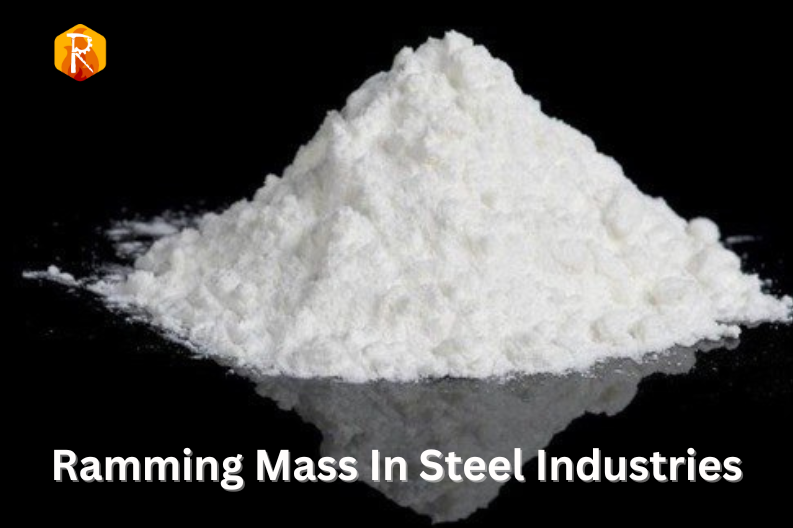The steel industry stands as a backbone of modern infrastructure, providing the raw material for construction, manufacturing, and various other sectors. Within the intricate processes of steel production, the role of refractories, especially ramming mass, is paramount. In this exploration, we delve into the world of ramming mass and its pivotal role in enhancing melting processes within steel industries.
Introduction to Ramming Mass
Ramming mass, a type of monolithic refractory, is widely used in steel manufacturing units for lining various components of furnaces and other high-temperature equipment. Composed of a mixture of refractory aggregates and powder with a bonding agent, ramming mass is known for its ability to withstand extreme temperatures and mechanical stress, making it an indispensable material in steel production.
The Crucial Role in Furnace Lining
1. Thermal Insulation:
One of the primary functions of ramming mass is to provide effective thermal insulation to furnaces. This property helps in maintaining high temperatures required for the steel melting process. The carefully designed composition of ramming mass ensures minimal heat loss, optimizing energy efficiency in steel manufacturing.
2. Erosion Resistance:
Steelmaking involves the use of aggressive and corrosive materials at elevated temperatures. Ramming mass acts as a protective barrier, resisting erosion and chemical attack from molten metal, slag, and other harsh substances. This erosion resistance extends the lifespan of furnace linings, reducing downtime and maintenance costs.
3. Density and Volume Stability:
Ramming mass exhibits high density and volume stability under extreme heat, preventing shrinkage or expansion that could compromise the integrity of the furnace lining. This stability contributes to the consistent performance of the refractory lining over prolonged periods.
Types of Ramming Mass Used in Steel Industries
1. Acidic Ramming Mass:
Composition: Primarily composed of silica aggregates.
Use Case: Suited for acidic steelmaking environments.
Key Features:
• Excellent resistance to acidic slag.
• Provides effective protection against corrosion in steel furnaces.
Applications:
• Acidic ramming mass is commonly used in electric arc furnaces (EAF) and other steelmaking processes where acidic conditions prevail.
2. Basic Ramming Mass:
Composition: Contains magnesia as a key component.
Use Case: Used in basic oxygen furnaces (BOF) and other alkaline steelmaking processes.
Key Features:
• Superior resistance to alkaline slags.
• Well-suited for environments with high basicity.
Applications:
• Basic ramming mass is essential for furnaces where the steelmaking process involves the use of alkaline materials.
3. Neutral Ramming Mass:
Composition: Balanced composition with a neutral pH.
Use Case: Versatile and can be used in both acidic and basic steelmaking processes.
Key Features:
• Exhibits stability in various chemical environments.
• Offers flexibility in applications where the acidity or basicity of the process may vary.
Applications:
• Neutral ramming mass is employed in situations where the specific characteristics of the steelmaking environment may fluctuate.
4. Silica Ramming Mass:
Composition: Primarily consists of high-purity silica.
Use Case: Suitable for steelmaking processes that require a high degree of purity.
Key Features:
• High resistance to thermal and mechanical stress.
• Exceptional stability in high-temperature environments.
Applications:
• Silica ramming mass is commonly used in induction furnaces and other applications where purity is a critical factor.
5. Pre-Mixed Ramming Mass:
Composition: Pre-blended mixture of refractory aggregates and bonding agents.
Use Case: Offers convenience and consistency in application.
Key Features:
• Eliminates the need for on-site mixing, ensuring uniformity.
• Ready-to-use formulation for quick and efficient installation.
Applications:
• Premix ramming mass is suitable for applications where rapid installation is desired, saving time and labor.
Enhancing Melting Processes
1. Improved Heat Transfer:
The proper application of ramming mass in furnace lining facilitates improved heat transfer within the melting zone. This results in efficient melting of raw materials, reducing energy consumption and enhancing the overall productivity of the steelmaking process.
2. Consistent Metallurgical Properties:
The stability and insulation properties of ramming mass contribute to the maintenance of consistent metallurgical conditions within the furnace. This is crucial for achieving the desired steel quality with specific mechanical and chemical properties.
3. Reduction in Downtime:
The durability and erosion resistance of ramming mass translate into reduced downtime for furnace maintenance. This is a critical factor in continuous steel production processes, where minimizing interruptions is essential for meeting production targets.
Challenges and Innovations
1. Thermal Cycling Resistance:
In high-temperature applications, refractories, including ramming mass, face the challenge of thermal cycling. Innovations in refractory technology focus on enhancing thermal cycling resistance, ensuring stable performance over repeated heating and cooling cycles.
2. Eco-Friendly Formulations:
With an increased emphasis on sustainable practices, there is ongoing research to develop eco-friendly formulations for ramming mass. This includes exploring alternative raw materials and manufacturing processes that reduce the environmental impact of refractories in steel production.
Conclusion: Ramming Mass as the Foundation of Steel Production
In the intricate landscape of steel manufacturing, where precision and reliability are non-negotiable, ramming mass emerges as a silent hero. Its role in enhancing melting processes, providing thermal insulation, and ensuring the longevity of furnace linings cannot be overstated. As the steel industry continues to evolve, innovations in refractory technology, including ramming mass formulations, will play a pivotal role in shaping the future of efficient and sustainable steel production.

